Italian teams restore damaged busts from ancient Syrian city
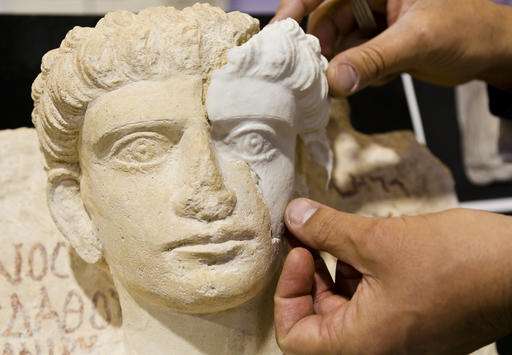
Italian art conservationists have restored two funerary busts from the ancient city of Palmyra, Syria that were badly damaged by members of the Islamic State group.
Restorers in Rome used a 3-D printer to generate replicas of the missing parts of the busts, which date from the 2nd or 3rd centuries A.D. They attached the replacement parts with magnets.
After Palmyra fell to Islamic State militants in 2015, extremists destroyed ancient temples for which the UNESCO heritage site is famous.
Restorer Daria Montemaggiori says she was "filled with anguish" when she saw damaged busts and was "happy to collaborate in canceling out this massacre."
The restored busts are to be returned to a museum in Damascus at the end of the month.
-
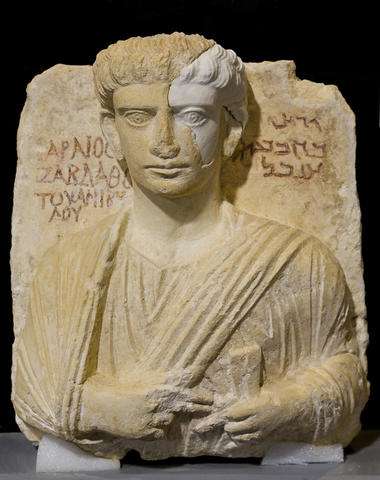
A limestone male bust dated between the 2nd and the 3rd century A.D. that was damaged during the Islamic State occupation of the Syrian city of Palmyra, is shown during a press conference in Rome, Thursday, Feb. 16, 2017. A male and a female bust from the National Museum of Palmyra, were restored in Rome and will be brought back to Syria at the end of February. (AP Photo/Domenico Stinellis) -
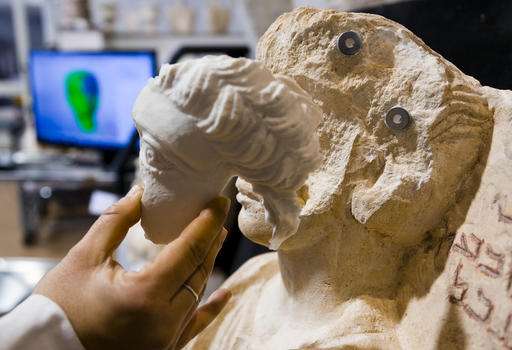
Restorer Daria Montemaggiori shows a computer-rendered, 3D print-generated replica of a missing part of a limestone male bust, dated between the 2nd and the 3rd century A.D. that was damaged during the Islamic State occupation of the Syrian city of Palmyra, in Rome, Thursday, Feb. 16, 2017. The replica is held in place with magnets. Two damaged sculptures from the National Museum of Palmyra were restored in Rome and will be brought back to Syria at the end of February. (AP Photo/Domenico Stinellis) -
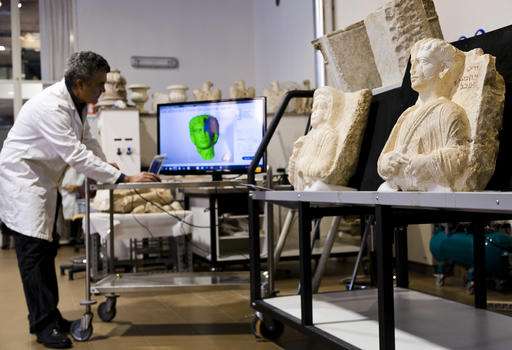
Restorer Antonio Iaccarino Idelson shows a computer 3D rendering of a missing part of a limestone male bust, right, dated between the 2nd and the 3rd century A.D. that was damaged during the Islamic State occupation of the Syrian city of Palmyra, during a press conference in Rome, Thursday, Feb. 16, 2017. The replica is held in place with magnets. The male bust and a female one, second from right, from the National Museum of Palmyra were restored in Rome and will be brought back to Syria at the end of February. (AP Photo/Domenico Stinellis) -
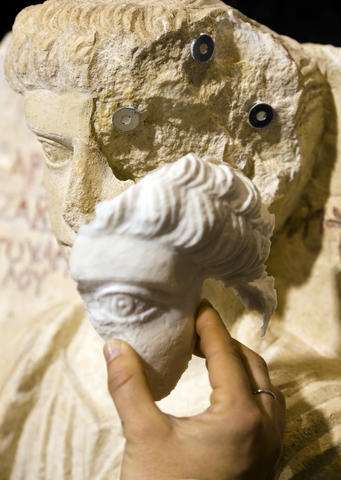
Restorer Daria Montemaggiori shows a computer-rendered, 3D print-generated replica of a missing part of a limestone male bust, dated between the 2nd and the 3rd century A.D. that was damaged during the Islamic State occupation of the Syrian city of Palmyra, Thursday, Feb. 16, 2017. The replica is held in place with magnets. Two damaged sculptures from the National Museum of Palmyra were restored in Rome and will be brought back to Syria at the end of February. (AP Photo/Domenico Stinellis)
© 2017 The Associated Press. All rights reserved.





















